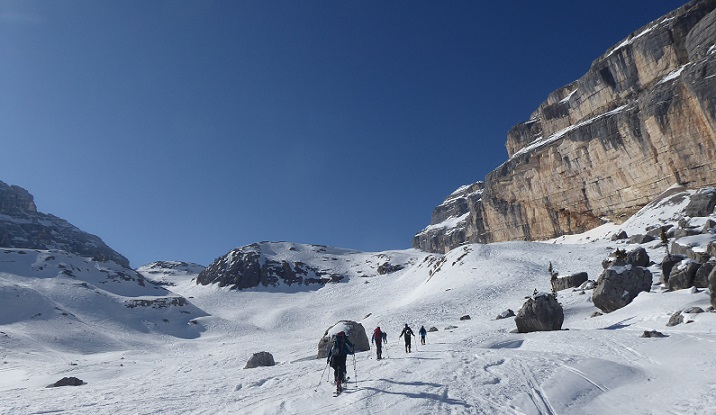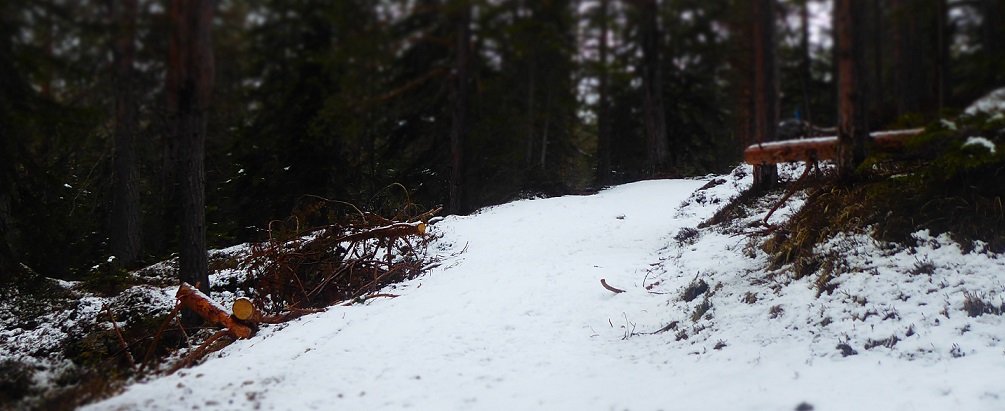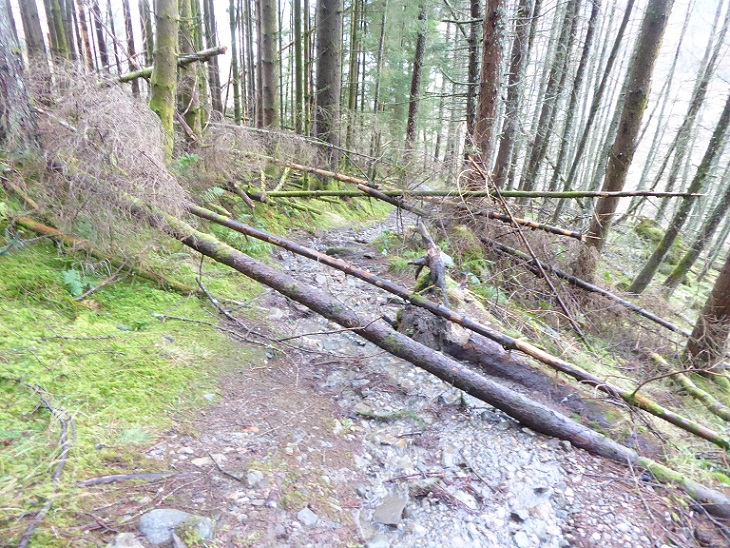 I am just back from a week ski touring in the Dolomites, a holiday delayed for two years because of Covid. I was last in the area four and a half years ago, after which I wrote a number of posts comparing land and tourism management in the Dolomites, which was declared a World Heritage Site in 2009, with Scotland’s National Parks (see here for example).
I am just back from a week ski touring in the Dolomites, a holiday delayed for two years because of Covid. I was last in the area four and a half years ago, after which I wrote a number of posts comparing land and tourism management in the Dolomites, which was declared a World Heritage Site in 2009, with Scotland’s National Parks (see here for example).
While human impacts are less obvious when the land is covered in snow, even in such conditions those charged with looking after Scotland’s National Parks could still learn a great deal from how protected areas in Italy – or indeed other mountain areas in Europe are managed.

While we spent much of our holiday off-path and above the snowline, the weather deteriorated in the second half of the week and instead of a high traverse over from the Sennes Hut to the Prato Piazza, we took a more circuitous route which involved descending to the valley floor and ascending by the military road which had been constructed in the First World War. Wherever trees had fallen across the path – and trees do get blown over in alpine forest or knocked down by avalanches but on nothing like the scale we have recently experienced in Scotland – they had been cleared.

Some of the clearance of trees was recent, others from some time ago. The implication was clear: this path is maintained regularly, something I had also witnessed five years ago when walking the Alta Via 1 (see here).
I could not help contrasting this with the situation I had witnessed on the Ardchullarie path in the Loch Lomond and Trossachs National Park which I had walked a few weeks previously (see here):

If asked to rate how paths are maintained, it would be something like Dolomites World Heritage Area 10, Loch Lomond and Trossachs National Park Authority (LLTNPA) 0.
This is not an accident but a consequence of decisions by those responsible for managing the recreation resource. Neither the Cairngorms National Park Authority or the LLTNPA have any plan to to maintain our existing path networks, inadequate as those networks are.
There is no need for this. In the Dolomites each night we paid a tourist tax of three euros. This helps pay for things like path maintenance and other tourist infrastructure and, if introduced in Scotland, would empower local communities to do the same. Unfortunately, in Scotland there appears almost no political will to do so, not even in our National Park Authorities which could be showing a lead on such matters.
In Canada you pay for the National Park on entry which is a tourist tax but so what. £5 per head per visitor. It could be collected by accommodation providers and we could set up a toll booth for access and parking at Rothiemurchus to access Glen More, Loch Morlich and Cairngorm. West of Braemar to access the East Side of the Park. It would allow us to regulate the volume of traffic there too. Locals could either receive a local pass, visitors to campsites, Glen More Lodge and Cairngorm Mountain could pay for access via a lift ticket or season pass.
Well, if I remember correctly, such parks in Canada are truly national, being owned by the nation, as are the ones most certainly in Sweden etc, but ours are merely ersatz versions based on the failed English model and so that kind of strategic approach is not possible. Another problem we face is the fervency of the right-to roam acolytes with their ‘Kinder Scout’ traditional history from a different era, who will be virulently opposed to regulated access accepted by other democratic countries. eg baxterstatepark.org visitadirondacks.org
After all the articles you have written about the way National Parks in Scotland are currently and historically managed, are you seriously suggesting that one penny of a “tourist tax” would be spent on things we actually need like path maintenance rather than disappearing into the ever increasing bureaucracy as millions already does?
It won’t be any different this time unless this is unequivocally sorted out first. Which it won’t be when you see who benefits from the current situation and by how much.
I have been looking into the path situation locally. I have found several lengthy reports and plenty of glossy websites plastered with the designer logos of a myriad of overlapping organisations all in receipt of public funding to some extent, surveying and analysing the issues (to summarise: the local paths are in a dreadful state where they even exist in practice as anyone with eyes can see), This goes back years. The number of paths which have actually received any work in this time is insignificant. All the funding goes on yet another report, rather than employ someone with a shovel. This is what would happen to a tourist tax in Scotland.
Besides, what constitutes a tourist? Do you become a tourist when you leave your house, your street, your village or area? What defines a “tourist area” to be subject to the tax if you dare to enter it? I consider that I live in the UK, we contribute to a common financial pool which is then redistributed meaning that the services I am not using when away from home balance out the ones I’m using while away. The tourist tax sounds like one part of a strategy to make sure that if you can’t afford to live in the “nice” bits you can’t afford to visit either.
It is not a lack of money which is responsible for the paths situation and other such issues, it is how it is currently spent.
Hi Niall,
I agree totally with your points about the bureaucracy and also how the Scottish Government in particular funds organisations to produce policy reports which make no difference on the ground. Where I disagree is that if money was properly spent it would be enough. Hence, a tourism tax but what I would like to see is money going directly to local communities through a mechanism implemented across our National Parks. The LLTNPA’s camping permit system actually provides both a means and precedent for this being in effect a tourist tax but one that only applies to campers, not to people who can afford to stay in expensive hotels. But this needs to be accompanied by reforms that ensure the revenue raised is invested in things like paths as happens on the continent.
Nick, you may be right but unless the system is reformed first we really can’t tell. but you can employ several path repairers for the cost of one office bound management speak generator so there are certainly forms of reform which would free up existing money.
There is no benefit for users to increasing funding of the existing system.
I would rather stick to a firm principle of “no payment without something in return” where additional revenue can be accounted for in specific expenditure of benefit to the payer.
Otherwise the money will simply disappear into more plush offices and the like.
I note that this year’s FLS “Stay the night” webpage includes a suggestion that charges are to be extended later this year which looks like another violation of this principle unless additional services are to be provided which is not stated.
Timely and as ever, Nick, thought provoking. It seems tidying up of the fallen trees in Badenoch has accelerated this last week. I’m guessing self interest is playing its part-there’s worthwhile profit. And there’s maybe even incentive to clear greater areas and to replant in favoured ways.
I guess Dolomites paths benefit from a variety of interested parties. Unlike here there are facilities reached by attractive walks by a variety of tourists.I think some Rifugios are private businesses. They need the paths in good order
I’ve encountered the military on several trips to the Dolomites particularly so up at the Falzarego Pass.I guess they contribute
What about hunters?
And there’s the huge membership of the Italian Alpine Club who do a power of path maintenance.
We don’t have that diversity of interest. We don’t have the people on the ground.
Gaick Lodge could make a great rifugio.I believe there were plans for something of the like a few years back. As far as I know the site is unfortunately continuing to deteriorate. The existence of tourist facilities in some really wild places would surely be of assistance in getting resources for path work.
Why is it that the average age of the volunteer path workers on Creag Bheag by Kingussie is probably well upwards of 60? Does that not say something of the makeup of our rural communities?